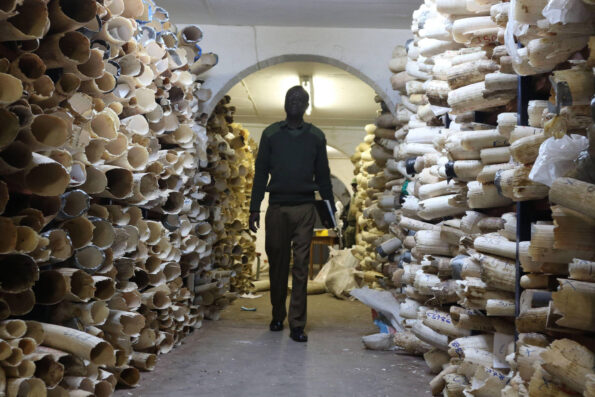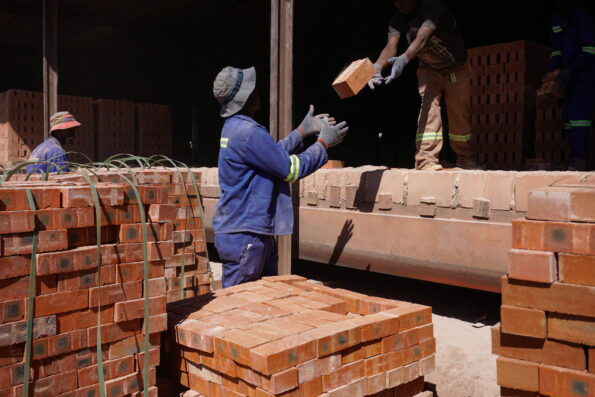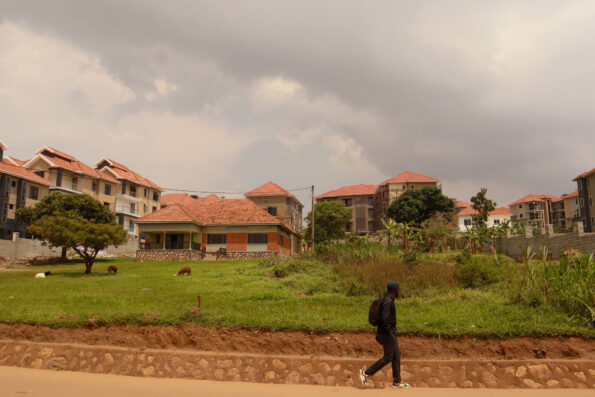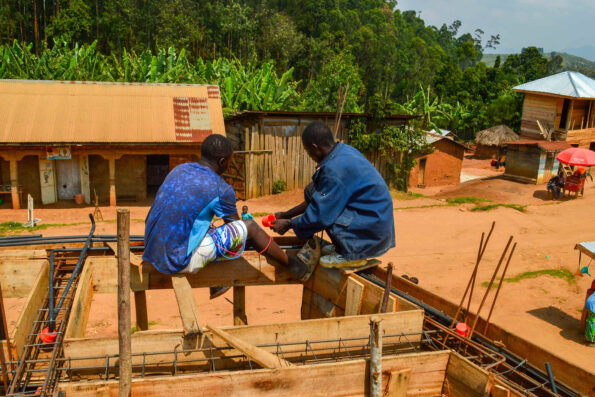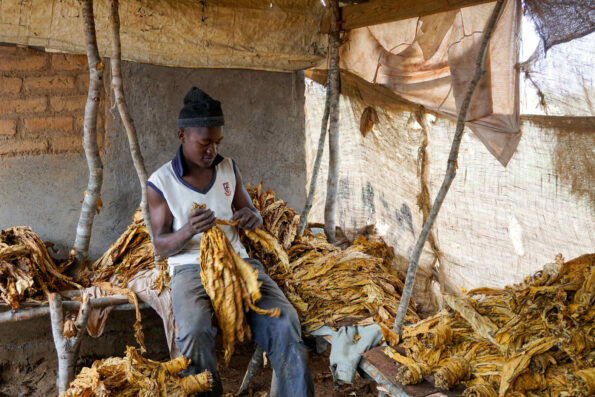
Mariam Aboubakar Esperance, GPJ DRC
A Gypsum World rosette sits at a construction site in Goma, the capital of DRC's North Kivu province.
GOMA, DEMOCRATIC REPUBLIC OF CONGO — In a small, open-air manufacturing plant, Blaise Shamamba pours a mixture of clay, cement, lime, water and fibers from palm-tree trunks into a mold, before placing it out in the sun to dry for two to four days. Shamamba, who owns a home-improvement and hardware store, says the product he is making is popular with his customers but was once hard to find in Goma, the capital of DRC’s North Kivu province.



To stock his shop, Shamamba, 25, relied for three years on importers who brought building materials and home decor, including cornices, from Tanzania and Dubai. Sometimes he would travel to China to buy these items. But the products were expensive to purchase from importers, and traveling to and from Goma was even more costly, he says.
But in 2015, along with seven of his friends, he began making his own cornices, using locally sourced materials to avoid incurring costs and to offer customers an affordable product. Shamamba and his team of seven named the small business Gypsum World.
“Every single Congolese deserves the right to live in a nicely decorated house,” he says.
Though widely available, imported building materials and home decor in Goma are too costly for some. While Shamamba’s products offer affordability, his team struggles to meet customer demand, because their production space is inadequate.
In 2015, DRC imported nearly 8.9 trillion Congolese francs’ ($5.64 billion) worth of items, according to the Observatory of Economic Complexity, a project conducted by the Massachusetts Institute of Technology Media Lab. Stone, ceramics, roofing tiles, glass and other materials sometimes used in construction accounted for 194 billion francs’ ($124 million) worth of imports that year.
Goma’s population is largely dependent on imports, partly because of years of conflict. Importing, however, remains a challenge in this part of the country, because poor road systems make travel to and from the city difficult.
Like other items sold in Goma, cornices are often expensive to buy from importers. To avoid losses, business owners overprice the product, Shamamba says. Imported cornices from China cost about 48,000 francs ($30), but Shamamba and his team sell a four-pack of their locally made cornices for 24,000 francs ($15).
On average, they sell about five packs of the cornices per day. Their second-best-selling product, a pack of 10 rosettes made of the same materials as the cornices, also go for 24,000 francs ($15). Each month, Shamamba’s team makes about 8 million francs ($5,000) in total sales from their products, he says.
Regular customers include architects, builders and small-business owners who sell the products in their shops, he says.
Olivier Mondo, a painter and one of Shamamba’s business partners, says he supplies construction sites across the city with their cornices. Before he began purchasing from Shamamba in 2015, Mondo relied on imported cornices, which were sometimes out of stock in shops in Goma.
“I’ve been engaged in the sale of construction materials since 2013, but today my successes are far greater than ever before,” Mondo says. “I guess this is because I can supply three building sites with materials at once, without running out of stock.”



Some prefer imported cornices, while others consider them poorer in quality than Shamamba’s locally made items. Augustin Kalamo, a construction-site manager and regular customer, says certain imported cornices crack, but Shamamba’s don’t. Shamamba’s products are used in office buildings, homes and other construction projects, Kalamo says.
The cornices and rosettes are used to decorate ceilings in homes, Mondo says. Customers can also place special orders for different designs and sizes, he says.
However, access to capital remains a challenge for Gypsum World and other businesses in DRC, Shamamba says, despite improvements in recent years. Though the products are cheap to make because the materials are easily found in the city, Shamamba says inadequate manufacturing facilities limit both production and the opportunity to compete with business owners who sell similar, imported products. But those facilities are all Gypsum World can afford now.
“Our products take too long to dry, rendering us incapable of meeting our customers’ demands in case of frequent rains,” he says.
Ndayaho Sylvestre, GPJ, translated this article from French.


